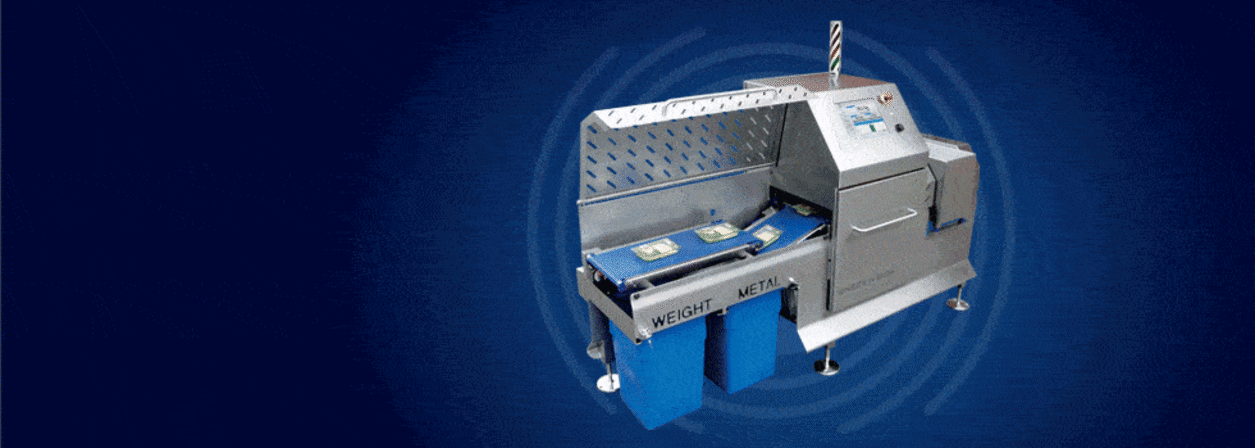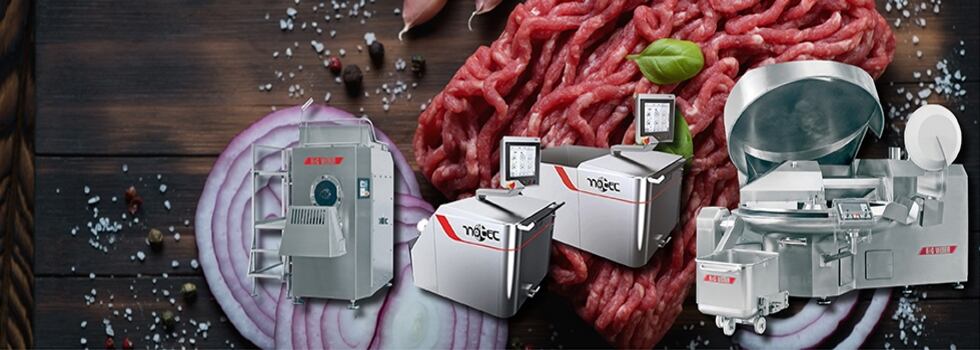Automation has been centre stage in food processing for some time, but never more so than now. Even before Covid-19 and the significant impact this brought in terms of social distancing in the workplace, finding ways to improve productivity and therefore profitability through automating processes has been a key focus.
In the manufacture of food, taking the potential for human error and human contact with food out of the equation has long been a significant contributor to food safety. The effects of Brexit in terms of labour shortages, plus its consequences on high staff turnover, provide another incentive to reduce staffing levels through automation. So, it is perhaps not surprising that, given these challenges, finding innovative ways to let machines take the strain has a higher profile than ever before.
An area of food production that has typically been labour-intensive is end-of-line packing. While the actual processes involved in creating the end-product – cutting, mixing, tumbling, cooking, slicing etc – were all making the most of technological innovation, it was not uncommon to see rows of people at the end of the line, inspecting product and packing it into cartons and boxes. This is now changing, with end-of-line packing becoming one of the most rapidly developing sectors in terms of automation opportunities.
Product inspection

An important element in end-of-line operations is checking for foreign bodies: metal, bone, glass or any other contaminant. While this can be done manually, increasingly X-ray machines are used to automatically detect anomalies and divert the affected products to reject bins. Extending it beyond just X-raying, there is a growing trend to combine several functions, such as X-ray, checkweighing and label verification, into a single machine. This means a smaller footprint compared to multiple machines, a factor that is particularly important in premises where space is at a premium. There are also significant benefits in terms of reducing risk and enhancing brand security. Such machines can include comprehensive databases through which programmes are entered into the production line, including date-coders, to offer a fail-safe system.

Checkweighing is also an important contributor to profitability, efficiency, security, and compliance, with the accuracy provided by automated systems potentially the difference between profit and loss. Modular grading systems can ensure accurate weighing of various sizes and weights of meat products as they are transported across a single weigh-conveyor. Picking up again on the trend for integration of processes, this can be combined with a depositing system – for example, the automation of salting and curing in bacon applications.
Label verification
In many products – those produced for the ready-meal market being a prime example – accuracy in label inspection and verification of every pack is crucial in complying with regulations. High-speed vision inspection systems are now available, which offer pinpoint accuracy at speeds of up to 200ppm. Such systems check that the correct top and bottom labels have been applied and that every character of the date code is correct and legible. Position and placement of labels, best-before dates and batch numbers are also verified, with the capability to accommodate a wide range of 2D and 1D bar codes. Any products for which faults are identified are automatically guided into a dedicated lockable rejection bin, thereby keeping the production line continuous while safeguarding against product recalls, which continue to be the nightmare scenario for food processors.
Databases can offer live data collection software, providing invaluable information regarding times and reasons for any line downtime, continuously calculating overall equipment efficiency (OEE) on the line to generate immediate monitoring and performance control, along with secure storage of all quality assurance (QA) and production reports for audit and traceability.

Case and crate packing
Once the product has been inspected, in the majority of applications it will need to be collated and packed into cases. Through fully or semi-automatic packing systems, products can be stacked, collated, loaded, converged, erected and closed. Key to this operation is flexibility, due to the wide range of different packs and cases employed. In addition to automatically loading individual packs, systems are available that can accommodate a mixed variety of packs, in either stand-up or lay-flat orientation. When selecting a machine, consideration should be given to the speed and ease with which different pack sizes and formats can be changed, as minimising downtime can be an important factor in ensuring that end-of-line processes don’t become a bottleneck.
The label verification systems adopted in checking packs at inspection stage can be carried through to the cases, with the labels on those also checked for positioning and accuracy of information. This offers a failsafe closed loop system, which provides a highly efficient, integrated packing solution that can be tailored to the specific requirements of a production line.
The new normal
There is much discussion around the post-Covid ‘new normal’ and what that will be. There is still understandably much uncertainty, but in food processing, the role of automation will be considerably greater. As companies find ways to free up space to enable effective social distancing and, where possible, allow machines to take on what were previously labour-intensive processes, so the need to identify the right equipment for the job will take on increasing significance. While advances have been made in this regard in end-of-line operations, there still remains considerable opportunity for expanding the role of automation.
As with many areas of food processing, there is a lot of choice in this arena. Talking with equipment suppliers who are well-versed in packing solutions, including the all-important after-sales service, has never been more important. Training the people who will be using the machinery should also be an important part of the equation. By ensuring that the solution is matched to the specific requirements of a given line, automated packing systems can deliver greater accuracy, brand security, reliability and profitability, increasing productivity while reducing labour costs.
Interfood Technology has many years’ experience in supplying innovative automated options for end-of-line operations. Through its dedicated Packing Solutions Division, the company offers complete, semi and fully automatic packing systems, backed by the reassurance of training, maintenance and service to ensure optimal performance.
Click here to see the wide range of available options: https://interfoodtechnology.com/packing-solutions-division .
For a video on Buhmann Servowrap C500, see below:



